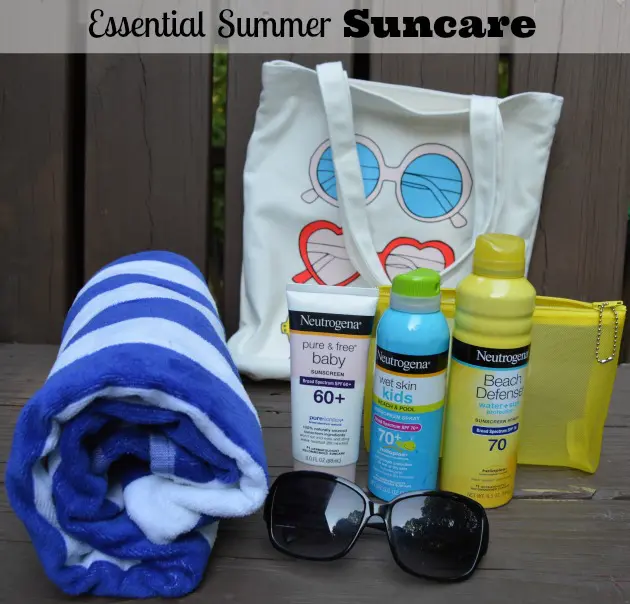School’s out, and the summer months are finally here. But, we still need to remember our ABC’s. In this case, the ABC’s of summer skin care in regards to protecting our skin and preventing skin cancer. Sun exposure can be beneficial, giving us the much-needed Vitamin D and providing us with a nice tan that makes us look healthy, vibrant, and alive. But be careful…the sun can also be dangerous and very damaging to our skin. Sun damage can cause premature aging, wrinkles, and various forms of skin cancer. This can be prevented by the use of sunscreen and sunblock. If, however, you are beyond the prevention stage, a board-certified dermatologist can help minimize, reverse, or even remove, the effects of the sun on the skin when necessary.
ABC’s of Summer Skin Care

Taking care of your skin during the summer is crucial, as exposure to the sun, heat, and other environmental factors can affect your skin. Here are some essential summer skincare tips to keep your skin healthy and protected.
A is for Aging
The sun causes damage to the skin by its various forms of ultraviolet (UV) radiation. UVA and UVB are the most common forms you’ll hear about. UVA is important in Aging, sunburns and risk of skin cancer. Its intensity is more consistent throughout the day and time of year. UVA is the culprit involved in tanning beds and tends to penetrate the skin to a deeper level than UVB.
The sun is responsible for up to 90 percent of premature aging. The skin becomes thinner, is less able to repair damage, and has more collagen breakdown. Melanocytes, the pigmented cells in the skin, increase in size causing freckles, moles, and age spots. Strength and elasticity of the skin decreases which leads to wrinkles. One of the best anti-aging products is actually sunscreen.
B is for Bad
UVB is the Bad type of ultraviolet radiation. It is the type responsible for sun burns as it affects the epidermis, the top layer of skin. UVB is most responsible for causing skin cancer. It has been proven that the higher frequency and intensity of sun burns before the age of 18 adversely contributes to skin cancer occurrence. UVB is most intense during the hours of 10 am and 2 pm during the summer.
C is for Cover
To avoid the damaging effects of the summer sun, cover yourself as well as take cover. Wearing long sleeves, wide brim hats, and other UV protectant clothing can prevent the suns rays from damaging your skin. They even have UV protecting swim shirts for your children. Also, consider spending some time in the shade, under cover, out of the way from the harmful UV rays.
C is also for Cancer
Wrinkles and aging are not the only things to be concerned with when discussing sun-damaged skin. Skin cancer is one of the most common cancers seen and it can be deadly. Basal cell carcinoma, Squamous cell carcinoma, and Melanoma are the big three. Basal cell carcinoma (BCC) is the most common and, thankfully, doesn’t spread all the often. Squamous cell carcinoma (SCC) is more frequent and can spread throughout the body if left unattended. Once it spreads, the survival rate can be as low as 34%. Melanoma is the most frightening as it can be the deadliest of the three. It tends to spread often and may be unpredictable in nature. Many times, we have to sample lymph nodes in distant parts of the body to ensure that no spread has taken place. This is the one skin cancer that can be highly related to family history as well.
A way to determine if a mole is suspicious for cancer is to ask the ABC questions. Is the border Asymmetric? Do Border irregularities exist? Has the Color changed or is it dark in color? Is the Diameter greater than a pencil eraser (1/4 inch)? Does it have Elevated borders? Has it Evolved? The last one is the most important for me. Has the spot changed recently? If so, get it looked at. Your primary care physician or dermatologist can give you the once over, but for those areas that are cosmetically sensitive, you may choose to see a plastic surgeon. If the mole needs to be removed, this can usually be done at the same visit, but often may need a more extensive procedure to ensure its removal is complete and the scar is well hidden.

S is for Sunscreen/Sunblock
The sun’s effect can be reduced by sunscreen. Sunscreen comes in two forms: radiation absorbers and sun blockers. The absorbers target specific wavelengths of radiation, either UVA, UVB, or a combination. These can be problematic because they can be deactivated by the sun, sometimes in as little as one hour. Oftentimes, they may not be water resistant and can irritate the skin. Some of you may remember the ingredient PABA that caused many to experience discomfort when applying this type of sunscreen. Now, many options include PABA-free formulations.
The sun blockers are the kind typically found on a lifeguard’s nose. They physically block the sun’s rays from having any effect, so no tanning results. Zinc, titanium, and talc are the main components to these. These can be greasy, clog pores and lead to acne. They are opaque and can be cosmetically unappealing unless you are sitting in a raised chair swinging a whistle around your finger all day. Newer formulations involve micronized titanium particles that are less noticeable yet still effective.
Sunscreen is measured in terms of SPF, Sun Protection Factor. This was determined by studying individuals wearing sunscreen against those with nothing on their skin and exposing them to sunlight conditions. The SPF number allows one to stay out in the sun without burning that number of times longer than an unprotected individual (SPF 15 =15 times longer).
You can still burn even though you have put on SPF sunscreen. Don’t be lulled into thinking you are immune to the UV rays just because you applied sunscreen once. You can just stay out longer than if you hadn’t put anything on your skin, but you can still burn and still develop skin cancer. It is best to reapply sunscreen often throughout the day, no matter the SPF used.
Skin Damage Treatment Options
For skin cancers, resection is performed, often moving skin around to cover the defect and better conceal the scar. If you are past the point of prevention and into the treatment phase for noncancerous sun related skin damage, skin creams can even out tones and pigments, chemical peels can realign collagen to smooth out fine wrinkles, Botox® can be used to paralyze muscles involved in wrinkling. Sometimes it is best to remove or physically tighten sun damaged skin with an eyelid lift, facelift, or neck lift.
Summer Skin Care Routine
Prevention is the key to avoid sun-damaged skin. Creating a summer skincare routine involves adapting your regimen to the unique challenges posed by increased sun exposure, heat, and humidity. Here’s a summer skincare routine to help keep your skin healthy and protected.
- Cleanser:
- Use a gentle cleanser to remove sweat, oil, and impurities accumulated overnight.
- Toner:
- Apply a toner to balance your skin’s pH levels and prepare it for subsequent products.
- Antioxidant Serum:
- Use a serum with antioxidants (e.g., Vitamin C) to protect your skin from free radicals caused by sun exposure.
- Moisturizer:
- Choose a lightweight, oil-free moisturizer to keep your skin hydrated without feeling heavy. Look for formulations with SPF for added sun protection.
- Sunscreen:
- Apply a broad-spectrum sunscreen with at least SPF 30 on all exposed skin. Reapply every two hours, especially if you’ll be outdoors.
Daily sunscreen (even on overcast days), wide brim hats, and long sleeves help tremendously. Daily aftersun care is also a great idea, like this all natural after sun cooling spray.
Conclusion
Caring for your skin during the summer is all about prevention and protection. The most important step is to wear sunscreen with a high ultraviolet protection factor (UPF) daily, especially if you’re engaging in outdoor activities. Choose non-comedogenic products to avoid clogging pores and opt for lightweight formulas instead of heavy moisturizers that can trap heat and sweat. For those with sensitive skin or skin problems, powder sunscreen can be a good option for easy reapplication. Don’t forget simple measures like wearing a wide-brim hat to reduce exposure to UVB rays and oxidative stress. The good news is, with daily use of the right products and habits, you can maintain healthy skin all summer long.
Avoid prolonged exposure to the sun, especially during peak hours (10 a.m. to 4 p.m.) Sunscreen is a must during the summer months. Choose a broad-spectrum sunscreen with at least SPF 30, and apply it to all exposed skin, including your face, neck, arms, and legs. Reapply every two hours, especially after swimming or sweating. Additionally, proper hydration is vital for your skin’s health. Drink plenty of water throughout the day to keep your skin hydrated from the inside out.
I hope you found these top tips useful for your summer skin care. Enjoy your summer fun and take care of your skin. Do you have any summer skin care questions about skin damage prevention or treatment? Leave them in the comments if you do.

About Dr. Mike-
Michael R. Burgdorf, MD, MPH (Dr. Mike) is an Award Winning, Board-Certified Plastic Surgeon and owner of Music City Plastic Surgery in Nashville, TN. He has focused his practice on helping moms regain their beauty after kids and his new book “The Mommy Makeover: Restoring Your Body After Childbirth” is scheduled to be released later this summer. Learn more about Dr. Mike and his practice at musiccityplasticsurgery.com. You can also follow MCPS on Facebook and Twitter.
Related Posts:
